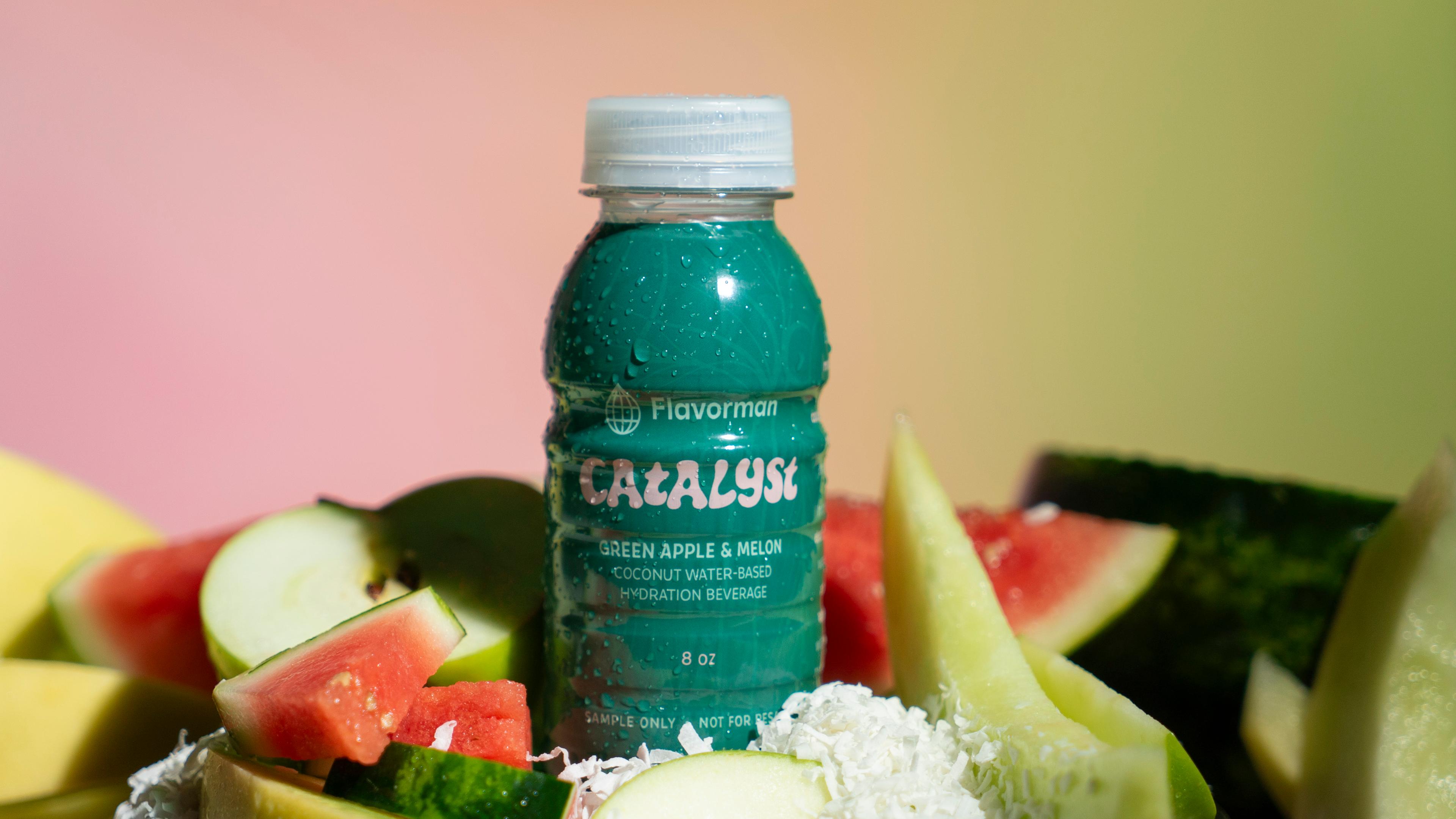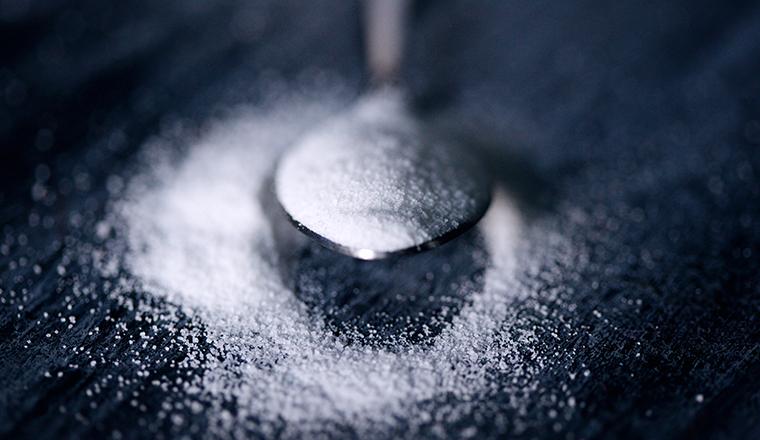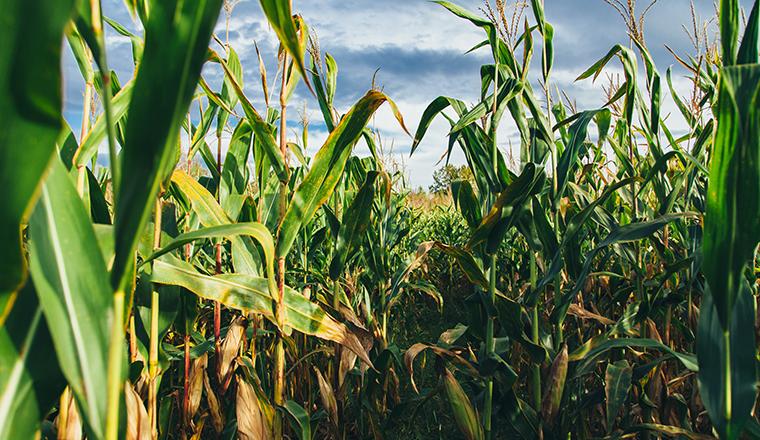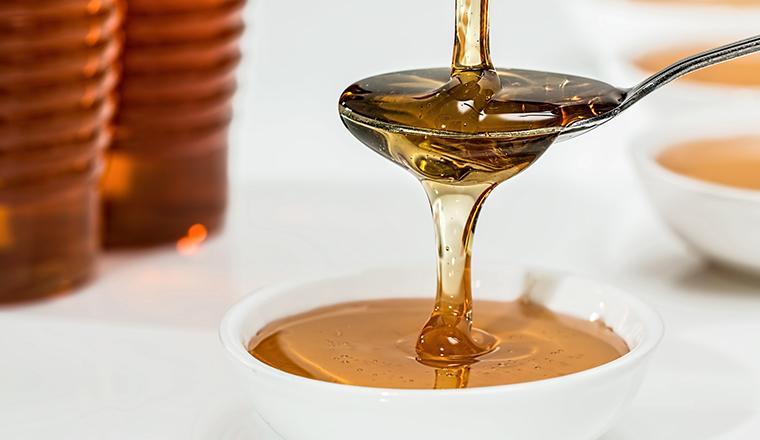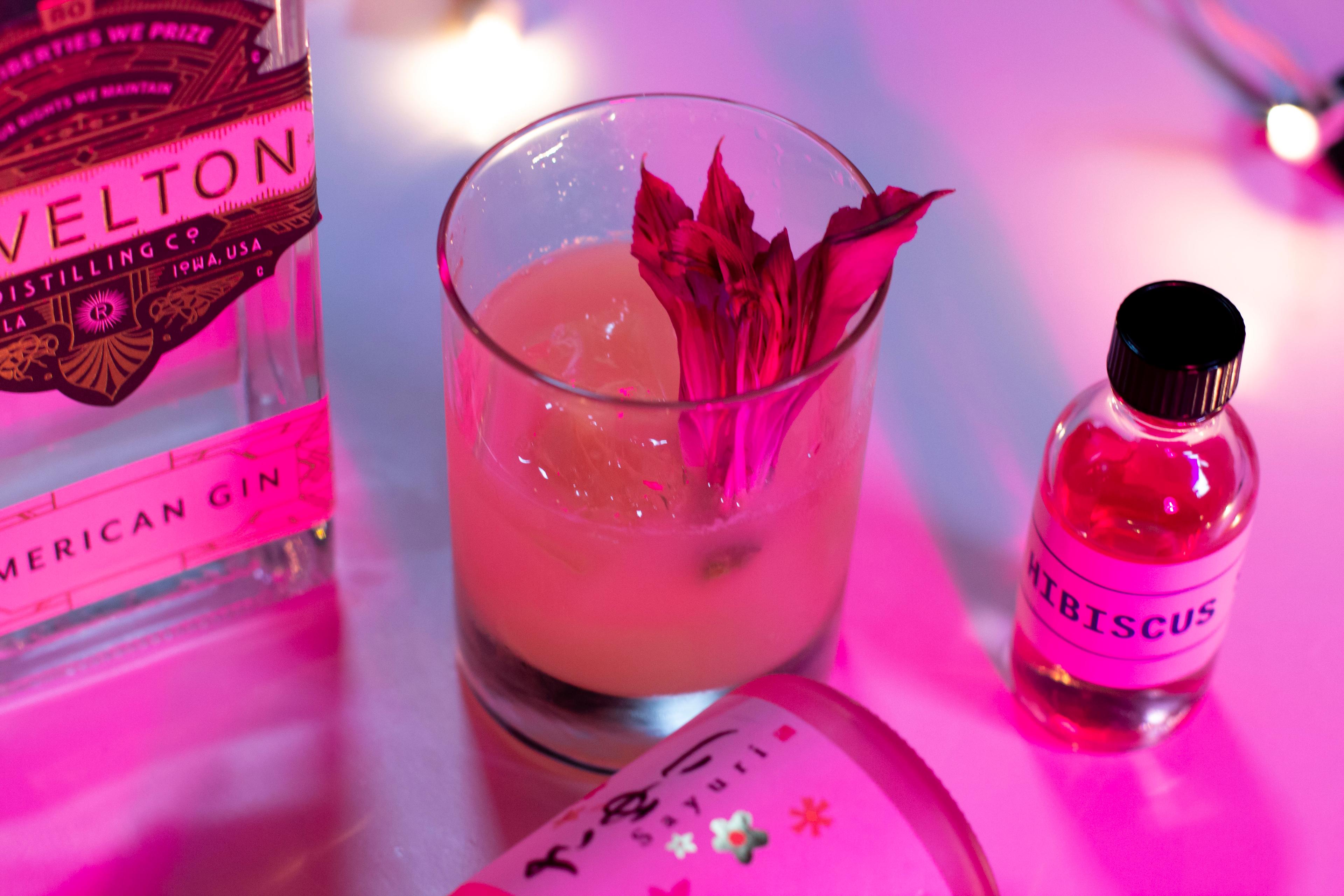Sugary or savory preferences aside, sweeteners are a crucial component of commercial beverage formulas. However, not all sweeteners are created equal, and they're not as simple as a spoonful of sugar! Developing a beverage product requires a bit of research to decide which sweetener will work best for your concept.
Finding the right sweetener (or, more likely, a combination of sweeteners) can be a challenge. These additives vary in cost, caloric value, mouthfeel, and intensity of sweetness per volume. All of which can affect your product's pricing, nutritional facts panel, and overall taste. Luckily for you, our Beverage Architects created this resource so that you can have all the facts, all in one place!
While there is a range of sweeteners out there, we'll specifically discuss naturally occurring sugars, high-intensity sweeteners, and sugar alcohols. Remember to pair the knowledge you gain here with the expertise and insights of beverage development experts who will be better equipped to answer questions about your specific drink project.
Sweeteners - Terminology
Before we dive into the types of sweeteners available to you, you should know the terms mouthfeel, added sugar, and total sugar, as well as how the standard sweetener (sugar) impacts beverage development:
Mouthfeel - It is best understood as a product's physical interaction in the mouth, essentially the texture and quality of experiencing the tasted liquid. This term is often used when talking about sweeteners and other aspects of a beverage's profile.
There is a broad range of qualities to describe mouthfeel, including density, dryness, graininess, heaviness, mouth coating, slipperiness, and smoothness. Different sweeteners create different mouthfeels, and some have no mouthfeel at all. Generally, when a sweetener with no mouthfeel is used, ingredients are added to the beverage to get it closer to the experience of real sugar. This is another reason why using a combination of sweeteners is a popular approach to beverage building: it allows you to balance out a number of variables for your drink in addition to mouthfeel, including desired sweetness, caloric value, and per-unit cost.
Added Sugar vs. Total Sugar - Before we dive into the types of available sweeteners, you should know the difference between added sugar and naturally occurring sugar. This may affect your product's labeling.
Sweeteners are responsible for giving food and beverages their sugary taste. Naturally occurring sugars are those found in dairy, whole fruits, or 100% fruit juice products that have not been otherwise sweetened (i.e., no additional sugar has been added during manufacturing). As the name suggests, added sugars are infused during the manufacturing process, usually to enhance texture or taste.
This is important for labeling purposes because the FDA now requires beverages to disclose the amount of "Added Sugars" (not just "Total Sugars") contained in a product on its nutrition facts panel. Depending on how important the presence of added sugars is to your market, this might be important information for you as you develop your drink concept.
Sugar - It makes the most sense to start with the most recognizable sweetener -sugar. Sugar is the benchmark by which all other sweeteners are compared. Its taste, sweetness, and even mouthfeel are immediately recognizable, making it convenient for beverage development. However, as a carbohydrate with 4 calories per gram, it's not a great fit for products targeting a lower calorie threshold.
Generally, evaluating sweeteners by their relative sweetness to sugar can provide a fuller picture when determining which will best fit your concept. In addition to designing your brand strategy, you should also determine a desired cost, taste, caloric value, and mouthfeel for your product. If it hasn't already been made clear, each of those considerations will be affected by your sweeteners.
Modified Sugars
As you begin to make decisions about sweeteners, you should be aware of a few modified sugars, including high-fructose corn syrup and crystalline fructose.
High-Fructose Corn Syrup (HFCS)
High-fructose corn syrup (HFCS) comprises any group of corn syrups that've undergone enzymatic processing to convert some of its glucose into fructose to produce a desired sweetness. HFCS is also called "glucose/fructose" in Canada.
In the US, HFCS is also among the sweeteners that have primarily replaced sugar. It's important to note that "high fructose" is somewhat of a misnomer; corn syrup is mostly glucose, so the process of raising the amount of fructose in the syrup to make it similar to the fructose/glucose ratio of sugar is what is responsible for the "high fructose" naming.
Factors like governmental quotas of domestic sugar and import tariffs on foreign sugar have all had an impact of raising the price of sugar, making HFCS more cost-effective for many sweetener applications.
There are a variety of HFCS types, but HFCS 55 has been the most popular for beverages, especially soft drinks (you can see other uses in the table below). Both HFCS 55 and 42 are about the same sweetness as sugar. The most widely used varieties of HFCS are:
- HFCS 55 - Mostly used in beverages like soft drinks; Comprises 55% fructose and 45% glucose.
- HFCS 42 - Used in a range of foods and baked goods; Comprises 42% fructose and 58% glucose.
- HFCS 90 - For specialty applications; Comprises 90% fructose and 10% glucose.
Crystalline Fructose
Like HFCS, crystalline fructose is a modified sweetener derived from corn, however, it is estimated to be slightly sweeter than HFCS (depending on the type) and much sweeter than table sugar. It consists of at least 98% pure fructose, with any remainder being water and trace minerals. Extra processing can result in a crystalline product that is closer to 100% pure fructose.
Crystalline fructose offers several unique benefits that make it more advantageous to use as compared to HFCS and other sweeteners. For example, this form of fructose is easily combined with other sweeteners and starches to not only boost sweetness, but also provide excellent mouthfeel.
Crystalline fructose is popularly used in drinks of all types-from carbonated beverages and enhanced or flavored waters, to sports and energy drinks, dairy products, reduced-calorie drinks, and drink mixes.
Other Naturally Occurring Sugars
Besides standard sugar, there are a variety of naturally occurring sugars used in beverage development. Three examples include honey, agave nectar, and maple syrup.
Honey
Honey is a naturally occurring sugar is a household staple that appeals to consumers looking for more familiar ingredients in their beverages. Honey is an interesting choice for organic, natural, or clean-label products; however, shelf life should be taken into serious consideration.
While honey tends to have a long shelf life on its own, when added to a beverage it becomes susceptible to quality changes, including darkening, dropping out of solution, and losing the intensity of its sweet aroma and flavor. It also has cost and flavor implications, and it contains 3 calories per gram, so it isn't a great low-calorie option.
Agave Nectar
An alternative to honey is agave nectar (or agave syrup). This natural sugar is commercially produced from several species of agave to create a nectar sweeter than honey, though less viscous, depending on the sugar concentration.
Agave nectar is an attractive sweetener for most of the same drinks as honey, though it comes with the same challenges, the most substantial of which include quality considerations. Depending on storage conditions, agave nectar can last up to two years on its own-but again, when introduced to the other ingredients and processes required to create a commercially viable beverage, shelf life is greatly reduced while cost remains high.
Maple Syrup
Maple syrup is another naturally occurring sugar similar to honey and agave nectar. Like both of those ingredients, maple syrup has a very specific taste which has implications for what types of flavors and drinks it can be paired with-and once again, cost and quality remain the biggest hurdles for using this ingredient in beverage applications.
As more consumers embrace naturally occurring sugars like honey, agave nectar, and maple syrup, it's important for developers to understand the risks and rewards involved in using these ingredients, as described in the previous section. For the past 20 or so years, sugar in its most recognizable form (sugar) has experienced a tumultuous reputation where health is concerned. This has created a healthy halo effect for alternatives like low- and no-calorie sweeteners.
Low- & No-Calorie Sweeteners
Known by the FDA as high-intensity sweeteners, this class of sugar alternatives generally contain few or no calories but have a higher intensity of sweetness per gram than sugar. Sugar-free sweeteners have become popular because they allow consumers more drink options without the extra calories or carbs.
Of course, many high-intensity sweeteners have inherent flavor issues associated with them that will require innovative formulation solutions. Common issues include a delay in the onset of perceived sweetness, a lingering sweetness, bitter or metallic aftertaste, a non-linear sweetener concentration to sweetness equivalency ratio, adaptation or desensitizing, and a lack of mouthfeel. Further, those extracted from plants may also present cooling, herbal, or licorice flavors. Luckily, the Beverage Architects at Flavorman are adept at addressing these problems.
Aspartame
Aspartame is an artificial, non-saccharide about 200 times sweeter than sugar. It is made by bringing together two amino acids, aspartic acid and phenylalanin. Since its introduction in 1981, aspartame has been one of the most researched artificial sweeteners on the market.
Aspartame has been most popularly used in diet drinks. Even though it contains about four calories per gram, the quantity of aspartame required to provide sweetness in drinks is so small, its caloric contribution is negligible-like most of the other high-intensity sweeteners on this list. Aspartame also gets away with having significant flavor differences from sugar. It doesn't quite match that standard profile (its aftertaste lasts longer than sugar), but consumers have more or less come to accept it, expecting this unique flavor in their favorite diet products.
Acesulfame Potassium (Ace-K)
First approved by the FDA in 1988, acesulfame potassium (also referred to as ace-K) is a calorie-free artificial sweetener that is about 200 times sweeter than sugar and one-third as sweet as sucralose.
Ace-K has a slightly bitter aftertaste, especially at higher concentrations. It's often blended with other sweeteners like sucralose or aspartame to improve shelf life and create a more sugar-like taste, whereby each sweetener masks the other's aftertaste.
Like aspartame, ace-k has mostly fallen out of fashion except in the diet soda category. It remains one of the sweeteners responsible for giving iconic products like Diet Coke and Diet Pepsi their signature flavor.
Stevia (Rebaudioside A)
Stevia is a natural, zero-calorie sweetener popular in diet drinks of all kinds. It is derived from stevia rebaudiana, a leafy plant that shares a similar appearance to mint. Its leaves alone are 150 times sweeter than sugar, and are used to distill a super sweet chemical called reb-A or steviol glycoside rebaudioside A, though we also often use reb-M and reb-D.
As an extract, stevia can be 300 times sweeter than sugar and even though this sweetness can take some extra time to detect in comparison to the immediacy of sugar, it tends to last longer on the palate.
Its benefits are that it is heat-stable, pH-stable, and non-fermentable, making it an incredibly popular additive in drinks of all kinds-but don't go rushing to this option right away, because it has a few disadvantages too. Stevia has a short shelf life and a bitter aftertaste from steviol glycosydes, which are characterized with a very specific and licorice-like flavor. The good news is that this can be altered by adding natural masking flavors or blending it with another sweetener.
Sucralose
Sucralose is a clean-tasting, zero-calorie artificial sweetener that is approximately 600 times sweeter than sugar. To achieve the same sweetness level as 10g of sugar, only 0.02g of sucralose is needed. This offers substantial per-unit cost savings, as sucralose is already cheaper than sugar.
The idea to use sucralose as an artificial sweetener was introduced in the 1970s. During an exploratory experiment, scientist Shashikant Phadnis reportedly misheard the command "test the compound" as "taste the compound," which allowed him to accidentally discover its sweetness and change what the world is drinking.
It is produced by processing sugar through selective chlorination, which removes the substance's caloric output. It is stable under heat and over a broad range of pH conditions, making it a popular additive for beverages requiring a longer shelf life.
In beverages, sucralose is added in very small quantities due to its extreme sweetness; but when you find sucralose in grocery stores, you'll discover that it looks and tastes almost like regular sugar. When processed with additional ingredients, such as glucose and maltodextrin, sucralose takes on a granular appearance and balanced sweetness by volume that's more comparable to sugar-that's how you get the Splenda packets you use in your morning coffee!
Monk Fruit
Also known as lo han guo or swingle fruit, monk fruit is a popular natural and zero-calorie sweetener native to southern China. Unlike most fruits, whose sweetness comes from fructose sugar, this small round fruit has a flavor that derives from mogroside-an extremely sweet substance with negligible calories thanks to the lower usage rate required to get to the relative sweetness of sugar.
In fact, like stevia, only 0.04g are needed to achieve the same relative sweetness as 10g of sugar, offering potential cost savings. Used together, stevia and monkfruit can create a profile that's closer to that of real sugar, though they can still be perceived as tasting "artificial" to some consumers for missing that up-front sweetness.
Sugar Alcohols
As the name implies, sugar alcohols can be described as hybrids of sugar and alcohol molecules-but don't worry, they don't contain any ethanol, the compound that makes you drunk. While sugar alcohols aren't calorie-free, they're relatively low-calorie and contain no net carbs based on their usage rates.
Erythritol
Erythritol is a sugar alcohol that occurs naturally in fruits and fermented foods. It is produced from glucose by yeast fermentation and commonly used as a medium in which to deliver high-intensity sweeteners (especially stevia derivatives), serving the dual function of providing both bulk (for mouthfeel) and additional flavor.
It's important to note that erythritol can create a cooling effect, so other ingredients are often used to counteract that effect.€¯ Erythritol is a popular sweetener that is found in everything from energy drinks and flavored waters to fruit drink mixes, sodas, and more.
Allulose
Another sugar alcohol worth mentioning is allulose. Chemically similar to table sugar and comparable in its taste, mouthfeel, and browning properties, allulose has become an increasingly popular sweetener in foods and beverages of all kinds.
Another attractive benefit to using this ingredient is that in April 2019, the FDA announced allulose could be excluded from the Total and Added Sugars declarations on the Nutrition Facts panels of foods and beverages; however, it still counts towards the overall calorie count through carbohydrates, contributing 0.2 calories per gram.
You can find allulose in many low-calorie carbonated and non-carbonated drinks, as well as coffee mixes.
The Best Things in Life are Sweet
As you can see, there are many options at your disposal when choosing a sweetener, and thousands when you get into combinations of sweeteners. Each sweetener has a unique selection of qualities and properties, in addition to pros and cons that must be considered.
As with every aspect of beverage building, you'll get to have fun figuring out which sweetener (or combination of sweeteners) will be best for your beverage-and you don't have to do it alone!
If you've got an idea for a great drink, the beverage development experts at Flavorman can help you bring it to life! Just fill out this web form or give us a call at (502) 273-5214 to get started.
Related Content
Natural & Artificial Flavors: How Are They Different?
6 FAQs On Reformulation Vs Product Line Extension
6 Ways To Reduce Risks For Your Beverage Product
